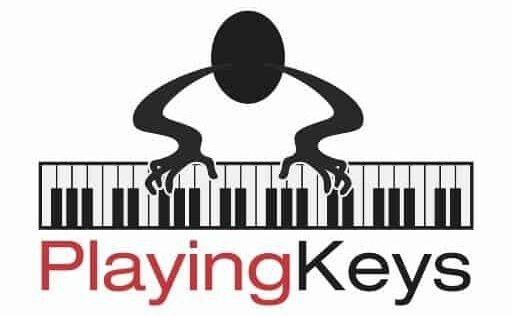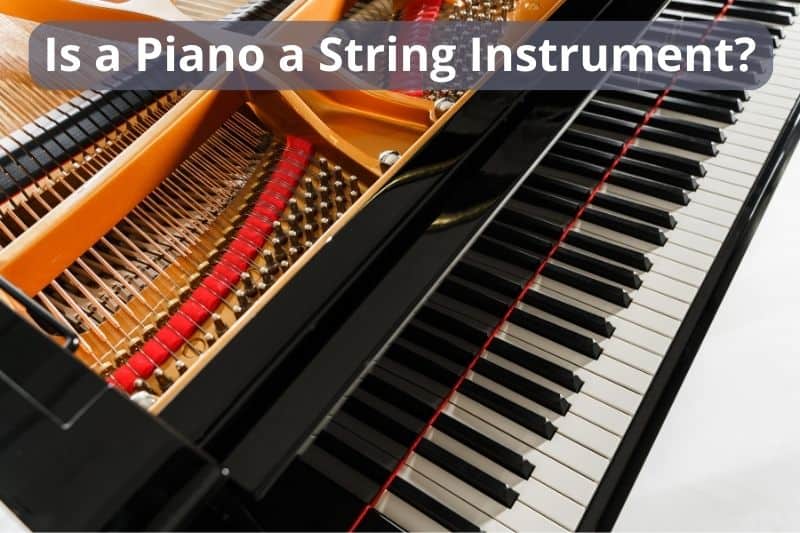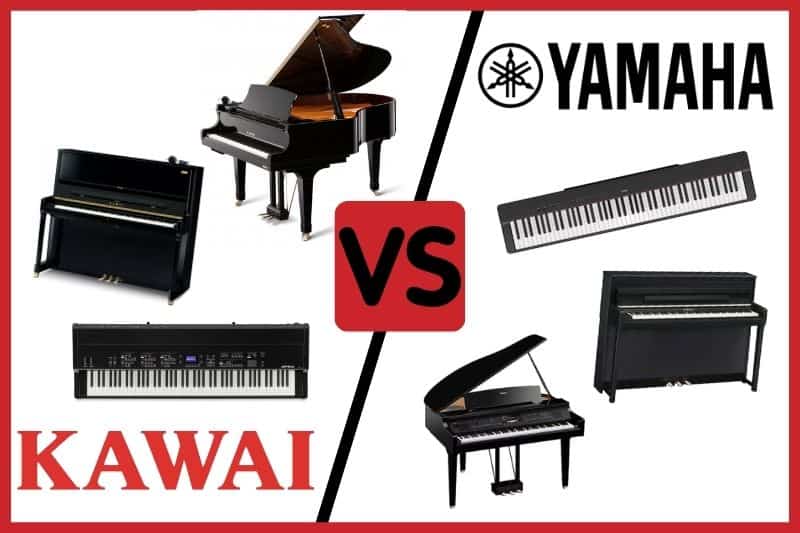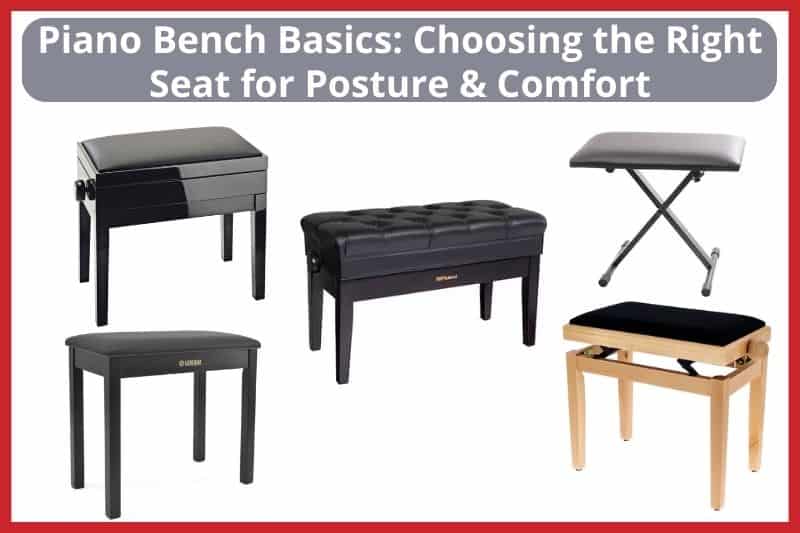When you’re in the market for a digital piano, the choice often narrows down to two leading brands: Yamaha and Roland. Both are lauded for their innovation and quality, but choosing between them can be daunting.
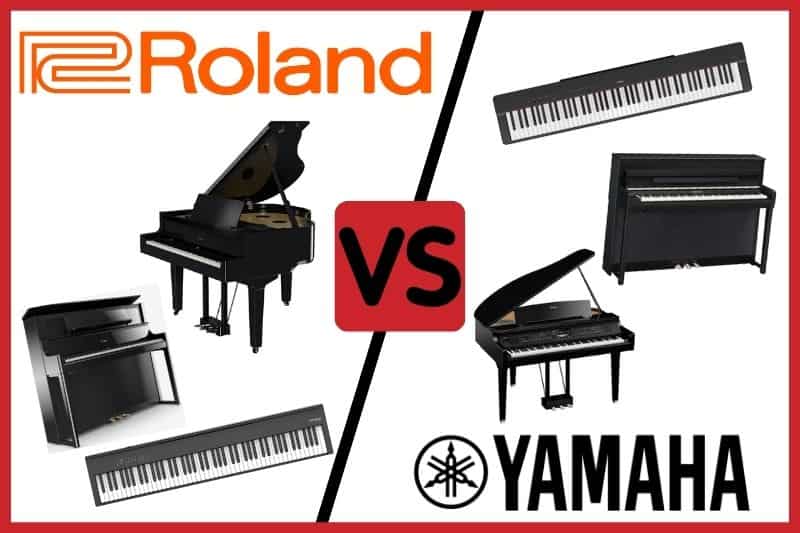
Yamaha digital pianos are recognized for their long-standing tradition in musical excellence, with a range that caters from beginners to professional musicians. Their digital pianos offer a blend of value, performance, and features that aim to emulate the sound and feel of an acoustic piano.
On the flip side, Roland has established its reputation through constant technological advancements and a commitment to authenticity in sound. If you’re after a digital piano that tries to push the boundaries of sound replication and dynamic response, Roland’s offerings might catch your attention.
If you’re stuck on which brand to go with, let our comparisons below help you decide.
Brand Heritage and Reputation
When you’re exploring the market for digital pianos, it’s essential to consider the heritage and reputation of brands like Yamaha and Roland. Yamaha has been a titan in the musical instrument industry since its founding in 1887. With over a century of experience, Yamaha’s commitment to quality and innovation has solidified its reputation as a trustworthy and highly respected name.
In contrast, Roland, established in 1972, may seem like a younger contender, but it has quickly gained status for its cutting-edge technology and quality. Roland digital pianos are known for their state-of-the-art features and have a strong following among both beginners and advanced musicians.
Here’s a brief comparison of the two:
- Yamaha Digital Pianos:
-
- Renowned for their rich, authentic sound and natural touch.
- Popular for their consistency and durability.
- Offer a range of models catering to beginners and concert pianists alike.
- Roland Digital Pianos:
-
- Emphasized for realistic sound reproduction and progressive hammer action.
- Often preferred for their innovative features and design.
- Provide options for all skill levels, with a focus on advancing digital piano technology.
Both brands share a commitment to quality, but their paths to excellence diverge. Yamaha prides itself on a long history of musical instrument craftsmanship, while Roland has built its reputation on technological innovation and digital expertise. Your choice might come down to whether you prefer a brand with a storied history in acoustic piano craftsmanship or one that is synonymous with pioneering digital piano technology.
Key Features of Yamaha Digital Pianos
When you’re considering Yamaha digital pianos, you’re looking at instruments known for their rich sound quality and innovative features. Yamaha’s Pure CF Sound Engine is designed to emulate the tone of the Yamaha CFIIIS concert grand piano, delivering a very natural and authentic sound.
The Yamaha P-125 and P-515 models are popular choices that incorporate this tech. You’ll find that the P-515 even uses samples from Yamaha’s flagship CFX concert grand, ensuring the sound you hear is as close to the real thing as possible.
With polyphony numbers ranging up to 256 notes for models like the Yamaha P-515, you can play complex pieces without note dropout. The Graded Hammer Standard (GHS) action in Yamaha keyboards mimics the feel of an acoustic piano by having a heavier touch in the lower end and a lighter touch in the higher octaves.
For connectivity, Yamaha has you covered with USB and Bluetooth options, allowing you to connect with music software or use the Smart Pianist app. This app enhances your playing experience by providing intuitive controls and the ability to access various voices and rhythms.
Most Yamaha digital pianos also come equipped with a sustain pedal, essential for more expressive playing, and some have additional pedal inputs for soft and sostenuto functions.
Yamaha’s dedication to blending tradition with technology gives you digital pianos that aren’t just instruments but also comprehensive musical tools designed to cater to your creative needs.
Key Features of Roland Digital Pianos
Roland digital pianos are known for their advanced SuperNATURAL sound engine, which provides you with exceptionally realistic piano tones and nuances. These pianos aren’t just about impressive sounds; let’s take a look at their key features:
- SuperNATURAL Piano Sound Engine: This technology is the core of Roland’s acoustic piano emulation, offering dynamic and expressive piano sounds that closely mirror an acoustic piano.
- Polyphony: High polyphony counts, like the 256 notes on the FP-30X, allow for complex passages and dense sustained chords without note drop-offs.
- Hammer Action and Escapement: The feel of the keys is vital, and Roland’s hammer action keyboards replicate the weight and response of acoustic piano keys. The escapement feature mimics the slight “click” feeling when pressing a grand piano key softly.
- Connectivity: Integration with modern technology is seamless, courtesy of USB and Bluetooth features. This allows you to connect the piano to computers, smartphones, and other devices for music production and learning apps.
Here are some of the popular models and their standout features:
- Roland FP-30X: Known for its portability and affordability, it’s perfect for players at home or on the go. It has ivory feel keys, adding to the authenticity of the playing experience.
- Roland FP-90: Offers you a premium feel with its powerful onboard speakers and a versatile selection of tones.
- Roland RD-2000: A stage piano that boasts a wide range of sounds, ideal for live performances with its dual sound engines and extensive controller features.
The speakers in Roland pianos ensure your playing is backed by robust sound quality, resonating rich tones throughout any room. The expansive tones can replicate not only grand pianos but also electric pianos, organs, and orchestral instruments, for a versatile playing experience. With these features, you’re equipped to perform, learn, and enjoy music to the fullest.
Sound Engine and Audio Technology
When selecting a digital piano, the sound engine is the core that generates the piano sound. It’s essential that you understand how Yamaha and Roland harness technology to recreate the richness and complexity of a grand piano.
Yamaha Sound Technologies
Yamaha digital pianos often feature the Pure CF Sound Engine and the CFX Grand Piano Sound. The Pure CF Sound Engine is derived from recording the company’s renowned CFIIIS concert grand piano, offering you authentic piano tones. Meanwhile, the CFX Grand sound is sampled from Yamaha’s flagship CFX concert grand piano, providing a resonant and expansive piano sound. Yamaha’s digital pianos boast a rich, detailed sound that captures the natural subtleties of an acoustic piano, often with 256-note polyphony—meaning the piano can handle 256 notes at once, ensuring your playing is expressive and dynamic.
Roland Sound Technologies
Roland, on the other hand, utilizes the SuperNATURAL Piano Sound Engine across its various digital piano models. This technology is lauded for its ability to produce highly natural piano tones. The SuperNATURAL engine isn’t just sample-based; it combines sampling with modeling technology. This means that the generated sounds can emulate the dynamic range and complex overtones of an acoustic piano, providing a responsive and expressive playing experience. Roland pianos with the SuperNATURAL sound engine support a high level of note polyphony, allowing for rich, layered performances without note drop-off.
Key Action and Playability
Understanding the nuances of key action and playability is crucial when shopping for the perfect digital piano. This defines the tactile experience and can greatly affect your performance.
Yamaha Key Action Technology
Yamaha digital pianos are often equipped with Graded Hammer Standard (GHS) or the more advanced Graded Hammer 3 (GH3) key action. These simulate the weight and response of acoustic piano keys. Lower keys feel heavier, while the higher ones are lighter, just like an acoustic piano. Specifically, the Yamaha YDP-165 model incorporates GH3 action, favoring a more realistic feel.
- Graded Hammer Standard (GHS): Suitable for beginners.
- Graded Hammer 3 (GH3): Offers a tactile sensation akin to an acoustic piano with weighted keys that mimic hammers striking the strings.
Roland Key Action Technology
Roland, on the other hand, uses Progressive Hammer Action (PHA-4) in their digital pianos. The PHA-4 incorporates escapement and ivory feel keys to its design. These features provide you with a sensation similar to playing a grand piano. The weighted keys are responsive, with a faster touch-release that ensures subtlety in your performance.
- PHA-4 Keyboard Technology: Delivers dynamic performance with its high-resolution sensing.
- Escapement and Ivory Feel: Enhance the authenticity of the touch.
Each brand’s technology aims to give you a realistic piano playing experience, with considerations on touch sensitivity and overall expression.
Design and Portability
You’ll find that both brands offer a range of sizes and aesthetics to suit different tastes and spaces.
Roland pianos are known for their sleek and modern design. They often come with a minimalistic look that might catch your eye if you prefer something that blends into your space without making too much of a statement. In terms of portability, Roland’s models, such as the FP-10 and FP-30X, are lightweight and compact, making them convenient to pack up and take on the go.
Yamaha, on the other hand, also offers portable options like the P125. But where Yamaha stands out is in its approach to mimicking the look and feel of an acoustic piano. With wooden textures and classic lines, Yamaha pianos can be a touch more traditional in design.
Note that both models are designed to save space, with slim profiles that fit well in cramped areas or small studios.
When choosing between the two for portability and design, it’ll come down to your personal preference and the practicality of moving the piano. If you need a digital piano that you can frequently move, check the weight and dimensions to ensure it fits your mobility needs.
Connectivity Options
Both brands offer a variety of options to connect your piano to external devices, allowing you to expand your musical capabilities.
Yamaha digital pianos often include:
- USB ports: For connecting to computers and mobile devices.
- MIDI: Allowing you to integrate with recording software and other MIDI-enabled devices.
- Bluetooth (on select models): Providing wireless connection to apps that enhance learning and playing experiences.
In a similar vein, Roland digital pianos are equipped with:
- USB connectivity: This is standard for data transfer and connecting to digital audio workstation (DAW) software.
- MIDI capabilities: Giving you the power to use your digital piano as a MIDI controller.
- Bluetooth connectivity: Found in many models for audio streaming and connecting to Roland’s proprietary apps.
Your choice might hinge on the specifics of what you want to connect to and how you prefer to connect it. If you’re looking to use smart devices wirelessly for interactive learning or sheet music apps, Bluetooth can be particularly handy. On the other hand, USB and MIDI are indispensable for music production and software compatibility.
Accessories and Expansion
It’s important to consider the range of accessories on offer and their potential for connectivity and expansion. This includes everything from pedals to USB/MIDI capabilities, which can greatly enhance your playing and learning experience.
Yamaha Accessories
With Yamaha digital pianos, you’ll typically receive a music rest and a sustain pedal to get you started. Additional accessories vary by model, but can include:
- Headphones: for private practice sessions.
- USB to Host: allowing connection to a variety of musical creation/education apps or MIDI devices.
- Speakers: built-in on many models for immediate playability, with the option to connect external powered speakers for greater sound projection.
Yamaha often offers a bundle that may include:
- A matching stand
- A 3-pedal unit for some models, providing you with soft, sostenuto, and sustain pedal functions.
Roland Accessories
Roland digital pianos also come with essential accessories like a music rest and sustain pedal. Depending on the model, you may find:
- Bluetooth functionality: for wireless audio streaming and MIDI connectivity to apps and software.
- USB ports: which facilitate audio data transfer and connect to various devices for expanded functionality.
- Headphone jacks: commonly available for practicing without disturbing others.
Roland models often have the option to purchase accessories such as:
- A dedicated keyboard stand
- Pedal units: with some providing up to three pedal functions – damper, sostenuto, and soft control, much like an acoustic piano.
Comparison and Contrasts
When you’re pitting Yamaha against Roland in the digital piano market, it boils down to assessing their pricing and the performance for various use cases.
Pricing and Value
Yamaha often offers a range of digital pianos that cater to both budget-conscious individuals and professionals seeking high-quality instruments. For instance, their entry-level pianos are known for being more affordable, yet they still deliver a commendable playing experience. On the other side, Roland tends to focus on integrating advanced technology into their pianos, which can translate to a higher price point, though many users find the investment to be justified by the piano’s capabilities.
- Yamaha: Known for a blend of quality and affordability.
- Roland: May have a higher initial cost due to cutting-edge features.
Performance and Use Cases
When it comes to performance, Yamaha digital pianos are praised for emulating the feel of their grand and upright pianos, suitable for home and stage use. They are a favorable choice if you’re looking for a balanced sound and reliable touch sensitivity. Roland shines with their high-fidelity sound engines and interactive features, which are particularly appealing if you’re interested in a modern playing experience, like joining a live band setting through digital features.
- Yamaha: Offers a traditional piano playing experience, great for students and seasoned pianists alike.
- Roland: Excels in innovative features for interactive performance, appealing to contemporary musicians.
Advantages and Disadvantages
Yamaha and Roland each have their unique set of pros and cons, which we’ll explore below.
Yamaha Digital Pianos Advantages
- Reputation: Yamaha is renowned for their quality across a range of models that often boast a traditional and authentic sound.
- Resale Value: Some Yamaha pianos are known to maintain or increase in value over time.
- Variety: They offer a broad selection, from beginner to professional level instruments.
Yamaha Digital Pianos Disadvantages
- Sound Customization: Yamaha’s digital pianos may have limited sound customization options compared to Roland.
- Touch Sensitivity: Entry-level models might not always have the touch sensitivity of higher-end or Roland keyboards.
Roland Digital Pianos Advantages:
- SuperNATURAL Sound Engine: This unique sound technology provides a rich, expressive piano experience that mimics an acoustic piano’s natural decay and resonance.
- Warranty: Roland offers a 10-year warranty, suggesting a strong confidence in their instrument’s durability.
- Dynamic Response: Many Roland models have advanced keyboard actions that provide better dynamic response.
Roland Digital Pianos Disadvantages:
- Price: For the technology offered, Roland pianos can be more expensive, which might be a consideration if you’re on a budget.
- Availability: Depending on your location, it might be harder to find a wide selection of Roland pianos in stores to try before you buy.
By now, you should have a pretty good idea of the differences between these two digital piano brands.
